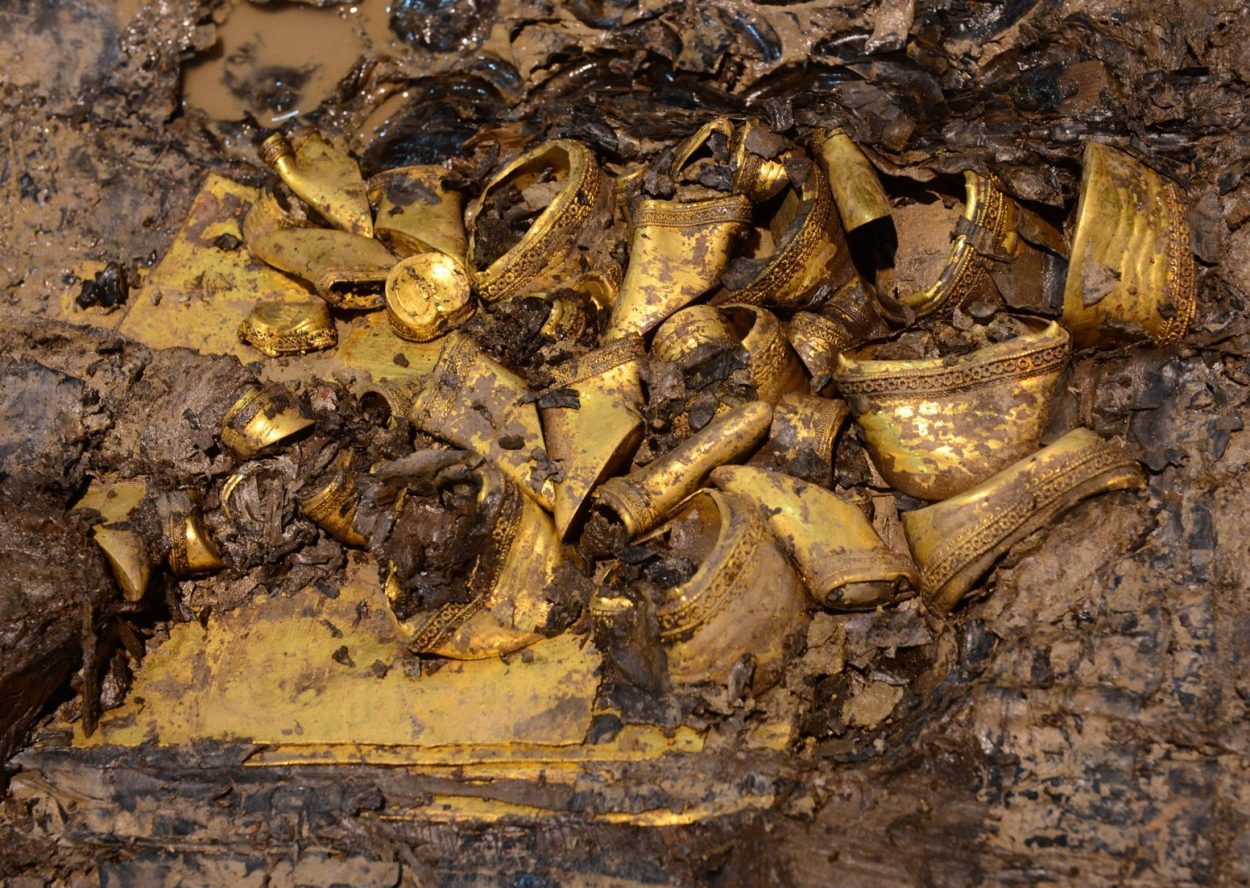Liu He was an emperor of the Chinese Han dynasty with the era name Yuanping. He was originally the ruler of Changyi, later installed by the minister Huo Guang as emperor in 74 BC.
Twenty-seven days later, he was deposed and omitted from the official list of emperors, with a total of 1127 examples of misconduct used as evidence in articles of impeachment by palace officials.
Liu He was banished to live in exile as a commoner, where he later died in his early thirties in 59 BC, survived by his 16 wives and 22 children.
He was buried in the tomb of the Marquis of Haihun, located in the northern part of Xinjian in Jiangxi. Archaeologists uncovered the tomb in 2011, with ongoing excavations discovering around 20,000 artefacts.
His tomb is one of the best-preserved from the Western Han Dynasty (206 BC-24 AD) ever found, with the most integrated structure, distinct layout and complete sacrificial system. The tomb has yielded the largest number of relics, boasting the most variety and the finest craftsmanship in Jiangxi.
Among the relics, including gold, bronze, and jade artefacts, archaeologists discovered a broken lacquer “screen” in the main chamber of the tomb and restored two portraits, one of which is believed to be the earliest portrait of Confucius ever found in China.
Also unearthed were over 5,000 pieces of bamboo slips of Confucian classics, indicating the prevalence of Confucius’ teachings over 2,000 years ago.
The Qi version of The Analects of Confucius, which had been lost for about 1,800 years, was found in the unearthed bamboo slips which have been subject to infrared scanning and are ready for further study.
Such vicissitudes might have deprived his life of imperial glory, but the relics unearthed from his tomb tell a different story, revealing a dynasty’s grandeur. The trove of gold items unearthed is the largest single batch ever found in a Han Dynasty tomb, proof of the dynasty’s rich gold reserves.
It is also the only tomb with a chariot burial site in the south of the Yangtze River. Five well-preserved horse-drawn vehicles, each with four sacrificed horses, were found, indicating that the owner was among the highest echelons of the Han Dynasty.
Liu, the marquis, was the grandson of Emperor Wu, whose reign ushered in a prosperous period of the Han Dynasty that is believed on par with the reign of the first emperor of the Qin Dynasty.
“To know Emperor Qin and his dynasty through archaeological artefacts, one can turn to Terra-cotta Warriors. Nevertheless, before the Haihunhou tomb, there were not many artefacts for an in-depth study of Emperor Wu,” said Yang Jun, a researcher at the Jiangxi Provincial Institute of Cultural Relics and Archaeology and the leading archaeologist.
Header Image Credit : Alamy (Copyright)





